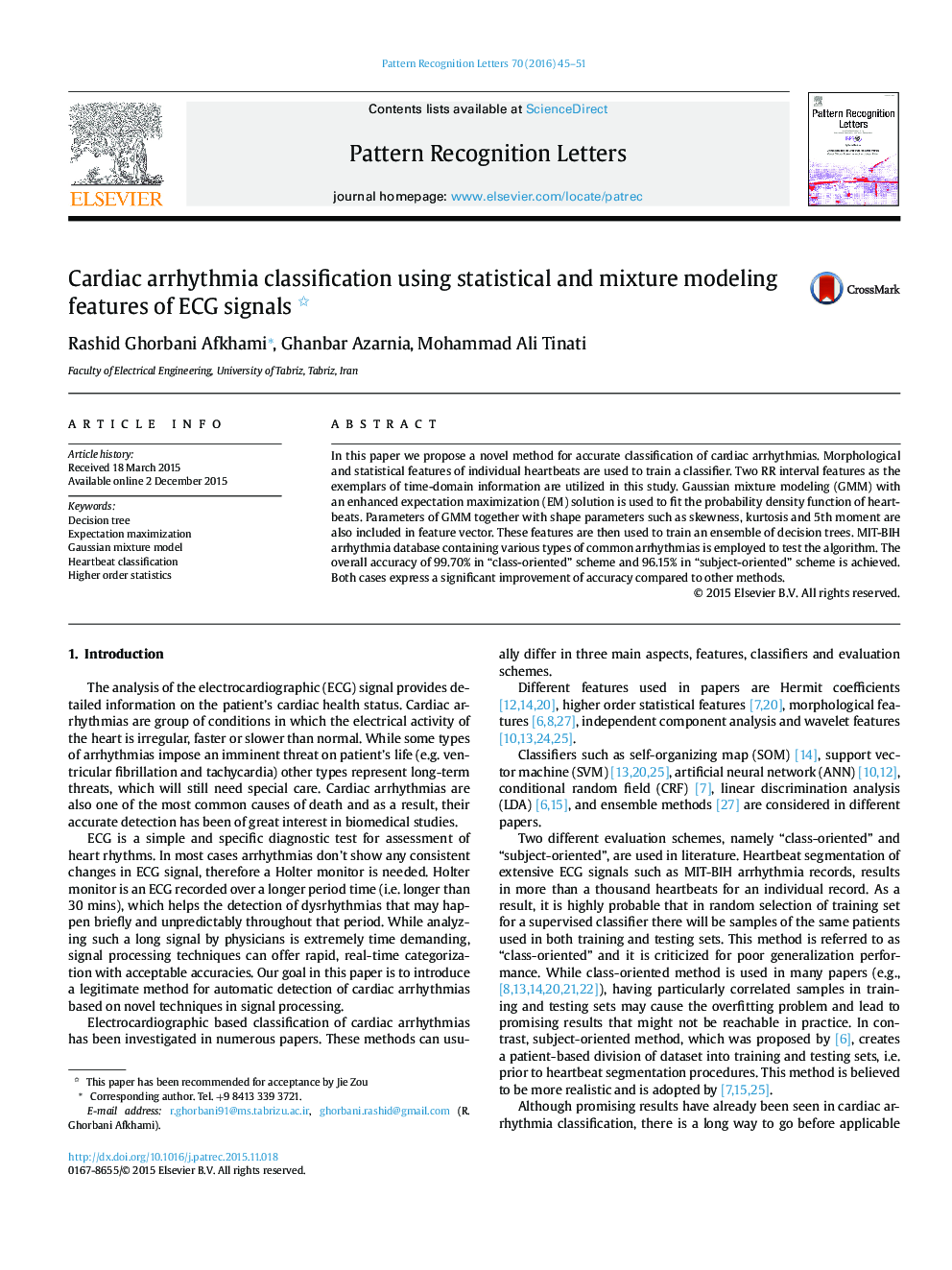| Article ID | Journal | Published Year | Pages | File Type |
|---|---|---|---|---|
| 533674 | Pattern Recognition Letters | 2016 | 7 Pages |
•Gaussian mixture modeling is used to fit the probability density function of heartbeats.•Expectation maximization algorithm estimates the parameters of statistical model.•Skewness, kurtosis and 5th moment of ECG signals express the shape parameters.•RR interval information represents the time-domain characteristics of ECG signals.•An ensemble of decision trees are used to perform the final classification.
In this paper we propose a novel method for accurate classification of cardiac arrhythmias. Morphological and statistical features of individual heartbeats are used to train a classifier. Two RR interval features as the exemplars of time-domain information are utilized in this study. Gaussian mixture modeling (GMM) with an enhanced expectation maximization (EM) solution is used to fit the probability density function of heartbeats. Parameters of GMM together with shape parameters such as skewness, kurtosis and 5th moment are also included in feature vector. These features are then used to train an ensemble of decision trees. MIT-BIH arrhythmia database containing various types of common arrhythmias is employed to test the algorithm. The overall accuracy of 99.70% in “class-oriented” scheme and 96.15% in “subject-oriented” scheme is achieved. Both cases express a significant improvement of accuracy compared to other methods.
